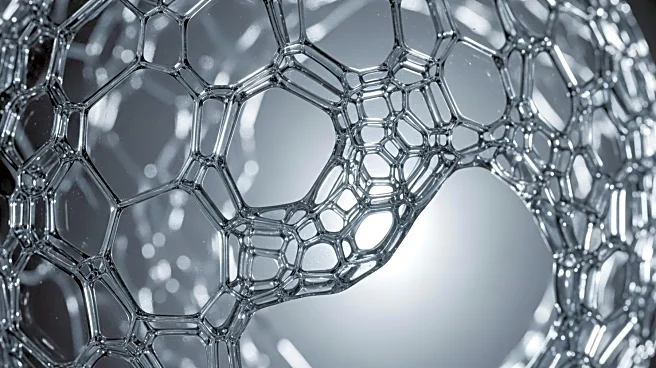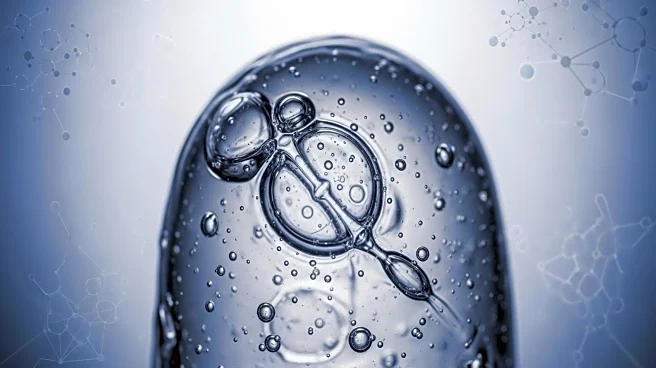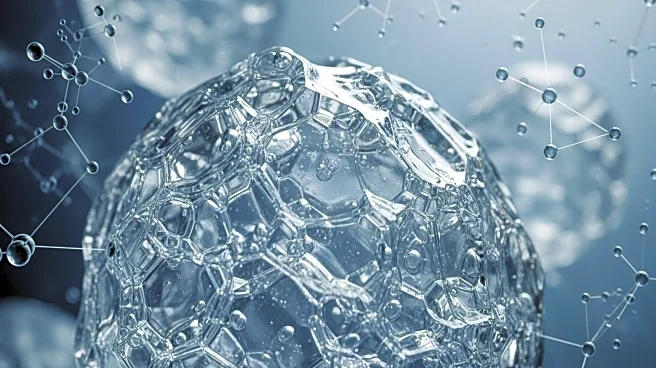What's Happening?
Researchers at Aalto University and the University of Bayreuth have developed a groundbreaking hydrogel inspired by human skin, capable of self-healing from cuts and scratches. This innovative material can achieve up to 90% repair within four hours and full restoration in 24 hours. The hydrogel's composition includes ultra-thin clay nanosheets and dense polymer networks, providing both stiffness and flexibility. Unlike traditional hydrogels, this new formulation enhances polymer entanglements through co-planar nanoconfinement, allowing automatic bond reformation after damage. The gel's ability to adhere to various substrates opens potential applications in biomedical implants and soft robotics, potentially reducing maintenance costs in sectors where material failure is costly.
Why It's Important?
The development of this self-healing hydrogel has significant implications for healthcare, particularly in wound care and biomedical implants. Its biocompatibility and rapid healing mimic natural skin processes, offering transformative potential for chronic wound treatments. The gel is also being explored as injectable implants for brain diseases, promoting tissue regeneration through minimally invasive procedures. The self-healing materials market is projected to grow significantly, driven by applications in energy storage, sensors, and puncture-resistant tires. This innovation could extend the lifespan of devices in soft robotics, reducing costs and enhancing efficiency.
What's Next?
The automotive and electronics sectors are considering these gels for self-repairing coatings, which could drastically reduce repair times and costs. Companies are exploring integrations in construction for durable infrastructure. As adoption accelerates, ethical and regulatory considerations will arise, particularly regarding accessibility and environmental impact. Ongoing research may lead to these materials being embedded in everyday life, from wearable tech to advanced prosthetics, promising a more resilient world.
Beyond the Headlines
The self-healing hydrogel represents a paradigm shift, blending nature's ingenuity with advanced engineering. Challenges remain in scaling production and ensuring long-term stability in diverse environments. Comparisons to bio-inspired designs reveal a trend toward sustainable materials. The future may see these materials incorporated into everyday applications, enhancing resilience and efficiency across various industries.











